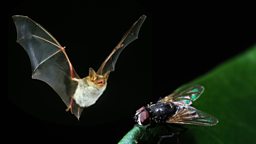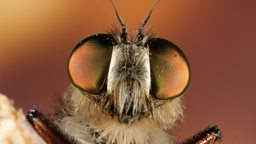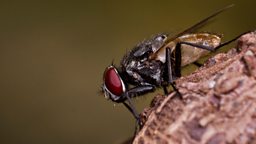Nine actually quite gross facts to swot up about flies (and other winged things)
There’s more to the much-maligned fly than meets the eye, as Brian Cox and Robin Ince discover in the The Infinite Monkey Cage podcast. While some of the habits of the fly family are hard to stomach, they do a dirty job that has to be done – otherwise the world would literally be up a well-known creek without a paddle! Joining Robin and Brian to discuss the merits of the diptera family are Dr Erica McAllister from the Natural History Museum, Matthew Cobb, from the University of Manchester, and comedian David Baddiel.
Here are nine fascinating – and, at times, nauseating – facts about flies (and bees):
In Praise of Flies
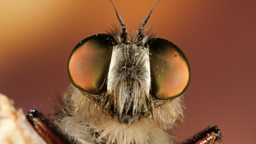
1. The study of flies is the basis of classical genetics
While he was studying fruit flies (drosophila melanogaster), biologist Thomas Hunt Morgan was surprised to find one with white eyes instead of the usual red. Further investigation revealed that white eyes were determined by the X chromosome. In the years following this discovery, made in 1910, Morgan’s team were able to show that genes are on chromosomes and are responsible for hereditary traits. It was the take-off moment for what is now termed classical genetics.
2. Botflies will make your skin crawl – literally
You may have found The Fly films scary, but fact is more gruesome than fiction. The larvae of botflies are parasites found in the flesh of mammals, often in the gut. Sometimes they arrive at the host by hitching a lift on a mosquito. When a mosquito feeds on you the botfly’s egg drops off and the larva crawls through the hole made.
It can’t burrow down because of the skull, so it grows across and you’re able to watch it develop
Dr Erica McAllister recalls an incident in Costa Rica where a colleague discovered a botfly in his head. “In that situation, it can’t burrow down because of the skull, so it grows across and you’re able to watch it develop. When it’s quiet at night, you can hear it eating.” The happy ending here is that Erica obliged by popping the fly out of her friend’s head. Lovely!

'I've popped one out of my friend's head!' - Dr Erica McAlister on her fascination with botflies
Erica describes how botflies can really get under your skin, literally.
3. Phorid flies are “horrid”, especially if you’re an ant
If the life of a botfly hasn’t revolted you enough – enter the “horrid Phorids.” Erica calls the Phoridae family the “most ecologically diverse family of animals on planet”, and they are certainly, well… talented.
The female of what Erica calls the “coffin scuttler” species can rip her wings off and burrow down six feet to find a dead body. Then there are the ant decapitators. The female pierces the weakest point of an ant’s back and lays her eggs. When the larvae hatch, they crawl through the thorax into the head, where they pupate. Some of the larvae will release an enzyme during the process, and, after two weeks, the ants head drops off and out comes the fly! Here’s the good news – the ants being attacked are fire ants and since there is no anti-venom for the bite of a fire ant, the phorids are doing us a favour.
4. There’s such a thing as “maggot cheese”
If we haven’t yet put you off lunch, brace yourself – some cheeses may contain larvae. One such cheese is casu marzu, a sheep’s cheese produced in Sicily and Corsica. The larvae within are from the piophilidae family, or “bone skippers” as they are known (some can leap over a metre), and they also turn up in cured meats, smoked fish; oh, and decaying flesh. The cheese, and others like it, is illegal under EU law. Little wonder, as it can cause myiasis, an infestation of larvae in the body.
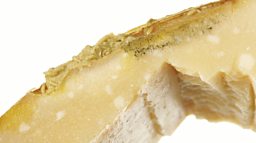
5. The female of the species are the bloodsuckers
Flies don’t have jaws and so they can’t bite you, although they can certainly pierce, shred, suck or generally maim you! Apart from the Tsetse fly, it’s the female of the species that can draw blood – the males are vegetarians. The podcast’s panel further reveal that it’s the female bee, hornet and wasp that stings you, and they do that with their egg-laying ovipositor, which the males do not have, of course.
6. Bees can play football
Some insects are pretty smart and can learn by observing. One of the things bees have learned to do is play football, or a version of it. An experiment showed that bees were able to move a ball into a hole and that bees watching this could come on as substitutes and do the same!
7. The world would be very smelly without flies
Even if flies don’t have ball skills (and, as Matthew Cobb says, no one has tried to teach them), they are game-changing creatures, nonetheless. In short, they do a dirty job that someone in the biosphere has to do – namely breaking down dead bodies and excrement. The world “would be very smelly” without them, Erica notes. When you consider that there are 9 billion people on the planet, each producing an average of 1kg of faeces a day, you can almost literally see the size of the job.
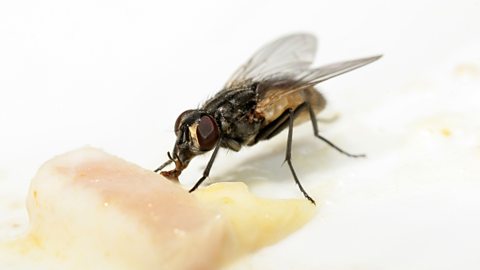
'If you get rid of the flies, you are going to be swimming around in a lot of faeces'
Dr Erica McAlister explains what a world without flies might look and smell like.
8. Flies give us chocolate
We don’t often acknowledge this, but flies are vital pollinators. 15 out of the 17 species that pollinate cocoa are flies, from the midge family, no less. So, without flies, we’d have a world without chocolate!
9. Flies could help our fear of needles
As well as saving the world from an almighty stench and enabling chocaholics, flies offer us insights into all sorts of things. For example, at Imperial College, London, there’s research into how hoverflies might influence aviation. Meanwhile, the vibrating movement of the mouth of the mosquito is of interest to the medical profession because of how needles might mimic it and enable virtually painless injections.
The true gift of the fly is, as Matthew Cobb says, that it gives a “simple representation of quite complicated things in a simple organism”. Ongoing research into the brains of maggots, for example, could give us valuable insights into how nervous systems work.
When it comes to their role in the cycle of life, it seems like there are no flies on flies!



